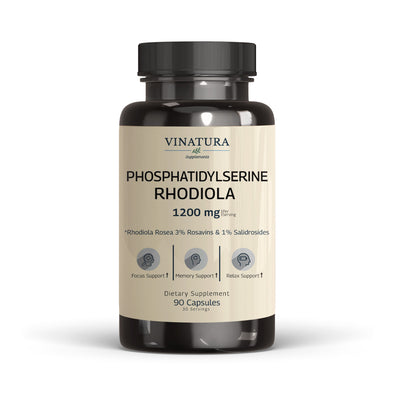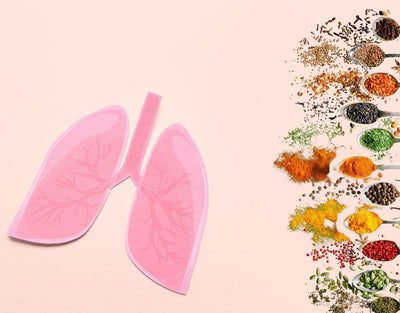
How to Get Rid of Bad Breath After Tonsillectomy
After a tonsillectomy, bad breath is a common issue and can last for up to two weeks while the throat heals. During this time, many people may feel uncomfortable or even anxious about dealing with the strong odor.
So, what causes bad breath after tonsillectomy, and how to get rid of it with proper oral care during recovery?
By following medical guidance and paying attention to a few simple tips, you can manage tonsillectomy bad breath effectively and support the healing process.
Before exploring further, please read the disclaimer located at the end of this webpage.
Key Takeaways
- Stay hydrated and use a humidifier to keep the throat moist, reducing dryness and bad breath during recovery.
- Maintain gentle oral hygiene and use mild saltwater rinses after 24 hours to control odor and support healing.
- Avoid smoking, alcohol, coffee, and harsh foods; chewing sugar-free gum can boost saliva and freshen breath.
Tonsillectomy Bad Breath and How to Manage It

To help control and reduce bad breath after tonsillectomy, the main recommendations include:
Increase Fluid Intake (Hydration)
Drink plenty of water to keep the throat moist and flush away unpleasant odors. This also helps wash out bacteria and debris from the healing site.
For children, staying well-hydrated and eating a healthy diet can soothe and clear the throat (Kids Health Info: Tonsillectomy and Adenoidectomy (T&A) – Discharge Care, 2021).
In addition, using a cool-mist humidifier, especially during sleep, can moisten the air and reduce throat dryness caused by mouth breathing [2].
Mouth Rinsing and Oral Hygiene

Everyone should continue their regular oral hygiene routine, even be more thorough, to help reduce bad breath after tonsillectomy, specifically [2, 3]:
-
Brush teeth twice daily (morning and night), including tongue cleaning, starting the morning after surgery for adults.
-
After 24 hours, adults can gently rinse with a mild saltwater solution (1/2 teaspoon of salt in about 237 ml warm water) to lessen odor and support healing.
-
For children, brushing twice daily is still recommended. If advised by a doctor, a mild baking soda rinse (1 teaspoon baking soda in about 250 ml water) may also be used.
Read more: Does Baking Soda Help with Bad Breath?
Chewing Gum

For adults, a helpful way to manage bad breath after tonsillectomy is chewing gum.
This stimulates saliva production, which helps clean the mouth, reduce odor-causing bacteria, and ease muscle spasms in the mouth and throat during recovery. As a result, it can make the healing process more comfortable and faster.
Avoid Stimulants
Avoid stimulants such as smoking, alcohol, and coffee, as they can increase the risk of infection, slow healing, and irritate the throat.
Limit throat clearing or forceful spitting, as this can cause irritation and bleeding. Also try not to consume hard, spicy, hot, rough or raw foods to limit damage to the healing tonsil area [4].
Related article: Good and Bad Foods for Bad Breath to Keep in Mind
Things to Avoid
To keep your breath fresh while protecting the throat during recovery, keep in mind:
- Do not rinse the mouth within the first 24 hours to allow the wound to start healing.
- Avoid over-the-counter mouth rinses.
- Do not use strong or alcohol-based mouthwashes, as they can dry out and irritate the throat.
- Always check with your doctor before using any rinses other than plain water or saltwater.
Post-Tonsillectomy Notes
The appearance of white, yellow, green, or gray patches at the tonsil site after surgery is normal.
These patches, also called tonsillectomy scabs, are part of the healing process. They usually last about 5-10 days and then gradually peel off in small pieces, disappearing completely within a few weeks. Once the scabs fall off, pink healed tissue is revealed underneath, sometimes with minor bleeding.
This healing process may cause pain and bad breath after tonsillectomy, which is considered normal. The odor typically improves within 10-14 days or longer, depending on the individual.
When to See a Doctor
Seek medical care right away or go to the emergency room if any of the following occur [2, 5, 6]:
-
Continuous bright red bleeding from the mouth or nose, or vomiting fresh red blood, even in small amounts.
-
Severe swelling, worsening pain, redness, warmth, or pus draining from the surgical site.
-
Fever above 39°C (102°F).
-
Difficulty breathing, noisy breathing or choking sensations.
-
Inability to swallow fluids for more than 24 hours, or signs of dehydration such as reduced urination, dizziness, weakness, or dry mouth.
-
Frequent swallowing, which may signal bleeding in the throat.
-
Severe vomiting, especially if blood clots are present.
-
Any new rash or unusual symptoms after surgery.
It is common to see small dark streaks of blood in saliva or mild nosebleeds at first, but fresh red bleeding or ongoing bleeding is a medical emergency. Worsening pain after the first few days or lack of improvement should also be evaluated by a doctor.
Patients are advised not to travel far or go to places without access to medical care within the first two weeks after surgery, since this is the highest-risk period for complications.
Frequently Asked Questions
1. When Does Bad Breath from Tonsillectomy Go Away?
Bad breath after tonsillectomy usually lasts for about 1-2 weeks. Most patients notice that bad breath resolves by the end of the second week.
Drinking enough water and practicing gentle oral care, such as rinsing with mild saltwater and avoiding alcohol-based mouthwashes, can help manage bad breath more effectively.
Many people report that their breath starts to improve noticeably after 1–2 weeks, as the surgical site heals.* The effect is often more pronounced in those who previously had tonsil stones or chronic tonsillitis.
However, not everyone experiences a big change, so it’s still important to maintain good oral hygiene and follow your doctor’s guidance.*
2. Why Does My Breath Smell Bad After Tonsillitis?
Bad breath after tonsillitis is mainly caused by bacterial infection and inflammation. This process produces pus, dead cells, and bacterial waste, which generate volatile sulfur compounds (VSCs) – the main source of foul odor.
In addition, food particles and debris can become trapped in the tonsillar crypts, leading to the formation of tonsil stones (tonsilloliths).
These stones harbor odor-causing bacteria and worsen bad breath. Infected and inflamed tissues also release a distinct sulfur-like smell, often compared to rotten eggs or spoiled cabbage.
The odor from tonsillitis is usually much stronger than ordinary bad breath caused by poor oral hygiene or diet. It typically comes with other symptoms such as sore throat, swollen tonsils with white or yellow patches, difficulty swallowing, fever and enlarged lymph nodes.
Conclusion
Bad breath during tonsillitis or after a tonsillectomy is very common and happens to nearly everyone. The key is not to feel embarrassed but to follow proper oral hygiene practices and medical guidance to protect oral health while reducing odor.
If you notice any unusual or severe symptoms, seek emergency care or visit your doctor immediately. This helps detect potential complications early and allows you to stay in control of your overall health.
Testimonial Disclaimer
*The testimonials presented on this website are provided by individuals based on their personal experiences with our products. These testimonials represent individual opinions and experiences, which may not be typical or applicable to all users of our products. Results may vary depending on a variety of factors, including individual health, lifestyle, and adherence to product usage instructions.References
- [1] Kids Health Info : Tonsillectomy and adenoidectomy (T&A) – discharge care. (2021). Rch.org.au. https://www.rch.org.au/kidsinfo/fact_sheets/Day_surgery_T_and_A_discharge_care/
- [2] Home Care Instructions after a Tonsillectomy and Adenoidectomy. (n.d.). https://www.childrenshospital.org/sites/default/files/2024-03/tonsillectomy-adenoidectomy-family-education-sheet.pdf
- [3] After tonsillectomy or adenoidectomy: Home care information. (n.d.). https://health.ucdavis.edu/otolaryngology/specialty/pediatric-otolaryngology/pediatric-tonsillectomy-home-care.pdf
- [4] Tonsillectomy And Adenoidectomy. (2025). Entslc.com. https://www.entslc.com/contents/ent-care/throat-neck/tonsillectomy-and-adenoidectomy
- [5] FV Hospital (2020, November 6). Tonsillectomy - FV Hospital. FV Hospital; FVHospital.com. https://www.fvhospital.com/learn-more/tonsillectomy/
- [6] Tonsillectomy - Mayo Clinic. (2025). Mayoclinic.org; https://www.mayoclinic.org/tests-procedures/tonsillectomy/about/pac-20395141
Author

Product Disclaimer
Including an ingredient or study does not evaluate, endorse, or recommend any Vinatura product or any third-party product. Some ingredients discussed may not be used in any Vinatura product.
The content of the articles has not been evaluated by the Food and Drug Administration (FDA) and is not intended to promote or endorse any specific product. Any products sold on this website are not intended to diagnose, treat, cure, or prevent any disease.
Opinions and Endorsements
Any claims, statements, or opinions expressed in the articles are those of the author(s) and do not necessarily reflect the views or opinions of the manufacturers of the dietary supplement products. The products sold on this website are separate from the content of the articles and are not directly endorsed or associated with the information presented here.
Liability Disclaimer
The author(s) of the articles, website, and manufacturers of the dietary supplement products do not assume any liability for any potential consequences arising from the use of the information provided in the articles. Ingredient effects, dosages, and safety vary by individual, formulation, and context; some ingredients interact with medications or may be unsuitable during pregnancy or lactation. It is recommended that individuals consult with a qualified healthcare professional before making any dietary or lifestyle changes, including the use of dietary supplements.
Product Usage
Please refer to the product labels and packaging for specific usage instructions and guidelines for the dietary supplement products sold on this website.
Customer Support
For any concerns or questions regarding the dietary supplement products, please contact our customer support team, who will be more than happy to assist you.





Leave a Comment
Be the first to comment.
What do you think?